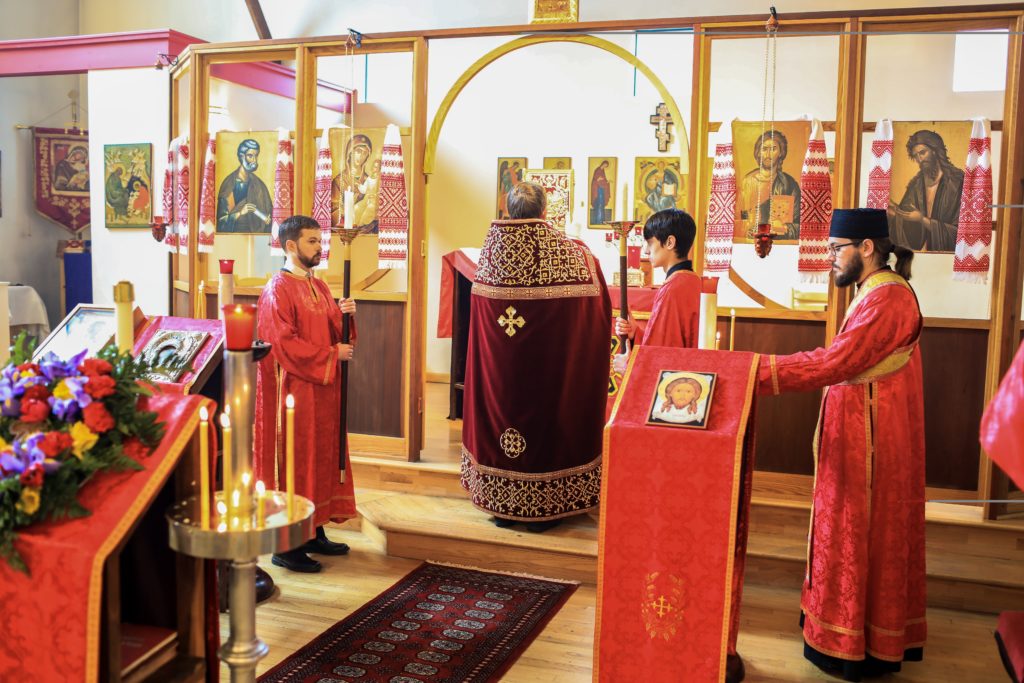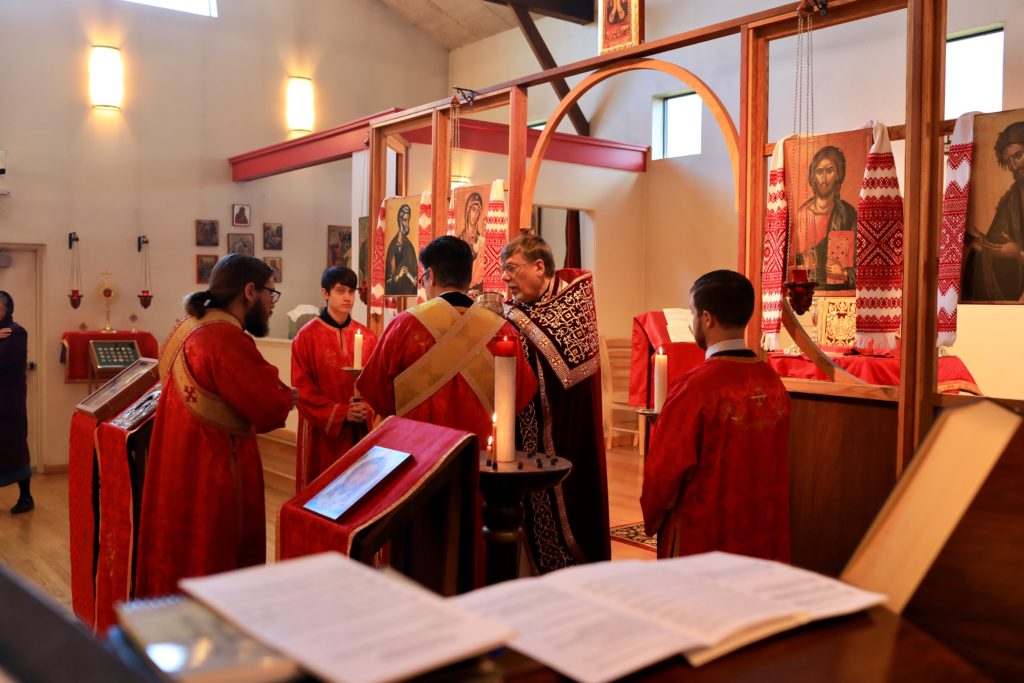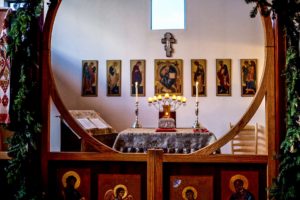Help us build our iconostasis!
Here in the wild West, Wyoming Catholic College is cultivating a unique encounter with the Eastern Christian tradition. Since its beginning, WCC has striven to ensure that the Byzantine liturgical heritage has been given a presence on campus. At present, WCC, unique among Catholic colleges in the country, has both a full-time Byzantine chaplain, Fr. David Anderson, and a dedicated Byzantine chapel. Every weekend there is Great Vespers, Matins and Divine Liturgy (the latter on both Saturday and Sunday), and during the week there are daily vespers, with other offerings varying according to the liturgical calendar.
 While we are excited to immerse our students and visitors in the wonders of the Christian East, we’ve realized that our Byzantine chapel needs some improvement. For the Byzantine tradition, the church is supposed to be a unique echo of heaven on earth. When God told Moses to build the Tent of Meeting for the Israelites, Moses was told to model it on his vision of heavenly worship, and the Byzantine tradition continues to look to that model as it tries to link heaven and earth in its own services. For Ancient Israel the worship space was divided into three parts: the courtyard, the sanctuary and the holy of holies. The Byzantine tradition has retained these three parts as the narthex, the nave and the sanctuary.
While we are excited to immerse our students and visitors in the wonders of the Christian East, we’ve realized that our Byzantine chapel needs some improvement. For the Byzantine tradition, the church is supposed to be a unique echo of heaven on earth. When God told Moses to build the Tent of Meeting for the Israelites, Moses was told to model it on his vision of heavenly worship, and the Byzantine tradition continues to look to that model as it tries to link heaven and earth in its own services. For Ancient Israel the worship space was divided into three parts: the courtyard, the sanctuary and the holy of holies. The Byzantine tradition has retained these three parts as the narthex, the nave and the sanctuary.
The narthex and the nave symbolize the earthly Church. Whereas in the Old Testament, only the priests were admitted into the sanctuary of the Temple, now, in virtue of their baptism, all believers gather to worship in the nave of the church. The altar area symbolizes the Holy of Holies, the sanctuary as it exists in heaven. Our Lord in his tabernacle, sits enthroned upon the altar, calling us to solemn worship.
 While Western Churches also have a narthex, nave, and sanctuary, the most striking difference between a Byzantine church and those in the West is a wall of icons and carved doors that separates the Byzantine nave from the altar. This is called the iconostasis. It reminds us both that it is through the communion of saints that we are joined to heavenly worship, and that only through the ministry of Christ in His Church that heaven is communicated to us here below.
While Western Churches also have a narthex, nave, and sanctuary, the most striking difference between a Byzantine church and those in the West is a wall of icons and carved doors that separates the Byzantine nave from the altar. This is called the iconostasis. It reminds us both that it is through the communion of saints that we are joined to heavenly worship, and that only through the ministry of Christ in His Church that heaven is communicated to us here below.
The iconostasis, then, is a special point of pride for every Byzantine church. For the last two years, the College has had two icons on stands as a symbol of the iconostasis, but now it has the opportunity to replace that symbol with a reality. Several members of the congregation have offered to build a more permanent and fitting iconostasis for our chapel. While custom-built structures like this can easily cost over $20,000, we have the opportunity to obtain our own iconostasis for less than half of that: $8,300.
 If you feel called to assist us in constructing this iconostasis, please use the form below. Any money raised beyond that cost will be directed to the purchase of additional icons, chapel furnishings, and the needs of the Byzantine chaplaincy.
If you feel called to assist us in constructing this iconostasis, please use the form below. Any money raised beyond that cost will be directed to the purchase of additional icons, chapel furnishings, and the needs of the Byzantine chaplaincy.
May God bless you!

